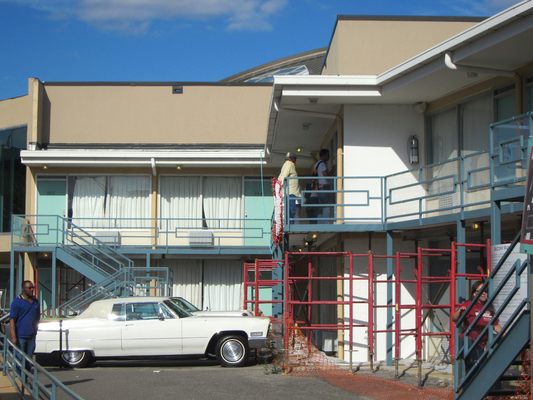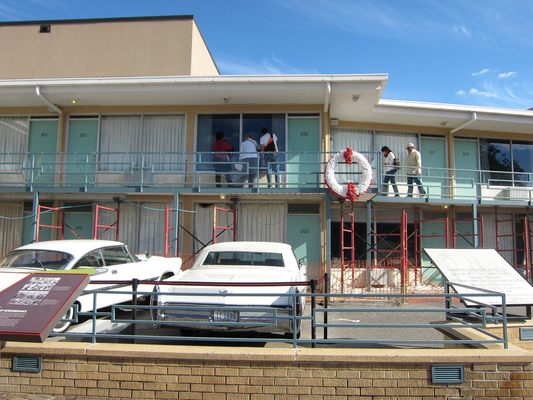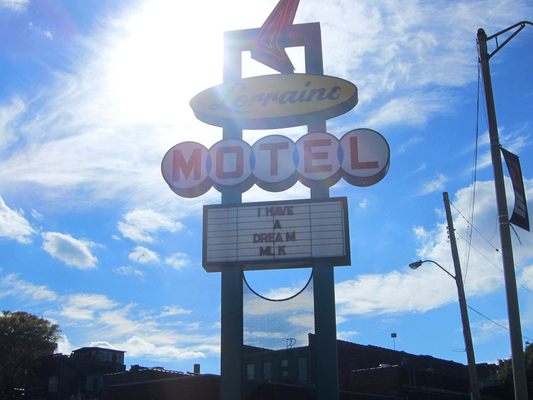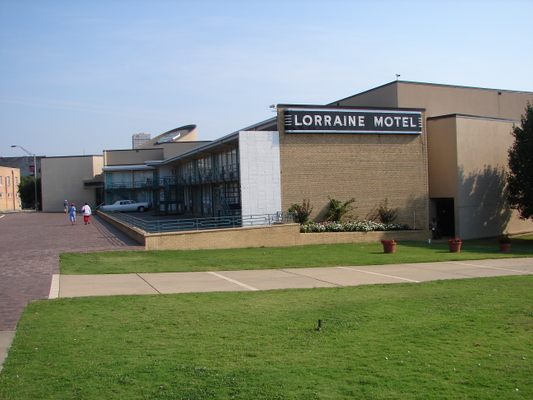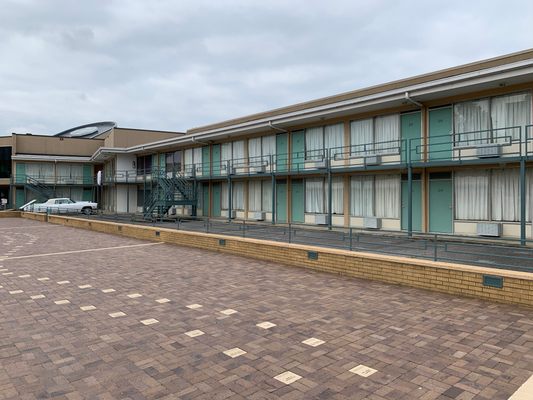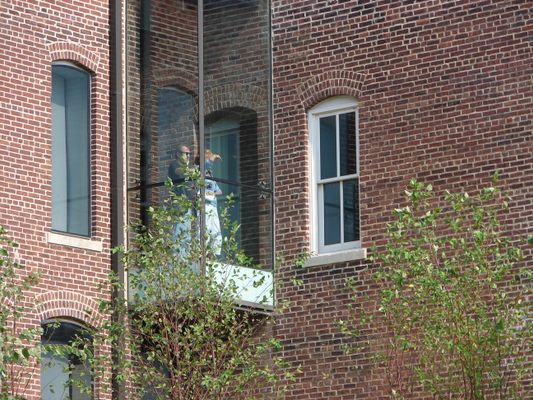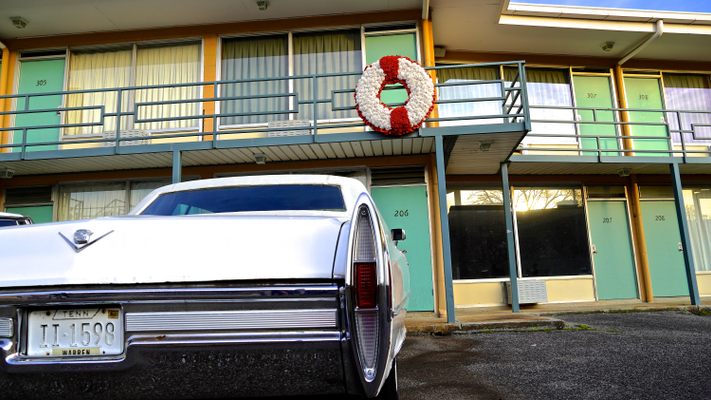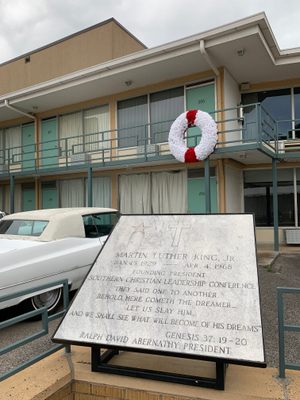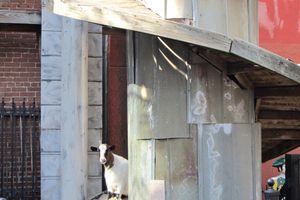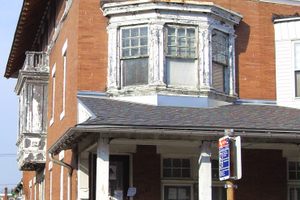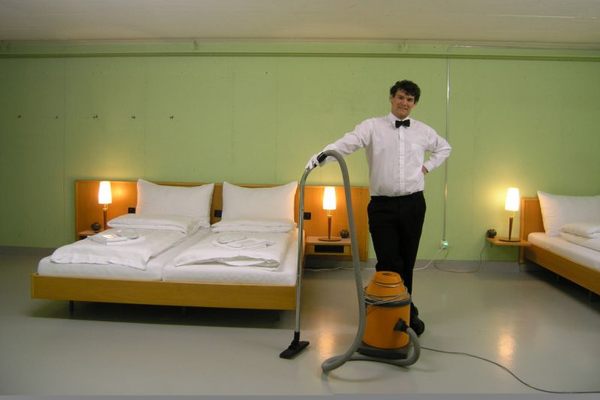About
The National Civil Rights Museum doesn't look like a museum at all. It's located in perhaps one of the strangest places that a museum can be located in—an old motel, an old motel that retains the off-white and teal colors that would have blended in back in the 1960s, but stand out today. But the museum has good reason to be located here. This is a historic building, the building where Martin Luther King, Jr. was assassinated on April 4, 1968.
At 450 Mulberry Street in Memphis, Tennessee, the Lorraine Motel is just a part of the four-plus acre complex that makes up the National Civil Rights Museum. The museum's property stretches all the way to a small hill across the street where James Earl Ray first confessed to shooting King from a second-floor bathroom window. It stretches all the way to Canipe's Amusement Store down on Main Street where the alleged murder weapon was first found, discarded with Ray's fingerprints still on it.
But the Lorraine Motel's history goes back even further than 1968. First built in 1925 on this site, the Windsor Hotel had 16 rooms. Later renamed the Marquette Hotel, the building was eventually purchased in 1945 by Walter Bailey who renamed it once again after his wife Loree and the song "Sweet Lorraine." During segregation, this motel served high-end black clientele and was visited by Ray Charles, Aretha Franklin, Otis Redding, Wilson Pickett, and many others throughout its long history.
After King was assassinated, Bailey left his room—Room 306—unoccupied and continued to rent out rooms in the motel. When his wife died, only five days after King was shot, Bailey converted the rooms into long-term, single-occupancy sites. The last guest was evicted on March 2, 1988, by the sheriff's department and the motel underwent a nearly $9 million overhaul. Three years later, the National Civil Rights Museum officially opened to the public. Today, nearly a quarter million people visit every year.
The last evicted resident, Jacqueline Smith, had to be forcibly removed from her apartment, where she had barricaded herself in. Smith lived in that room for more than 15 years, moving in in 1973 and serving as a housekeeper for the Lorraine during the entire time. She has held candlelight vigils outside of the Lorraine with some frequency for the more than 20 years since her eviction.
Related Tags
Community Contributors
Added By
Published
January 17, 2011
Sources
- The New York Times: "Eviction Empties Motel Where Dr. King Died" (March 1988): http://query.nytimes.com/gst/fullpage.html?res=940DEEDD1739F930A35750C0A96E948260
- Wikipedia: National Civil Rights Museum: http://en.wikipedia.org/wiki/National_Civil_Rights_Museum
- https://www.lavieconsult.com/driver-history-clean-in-nyc/

